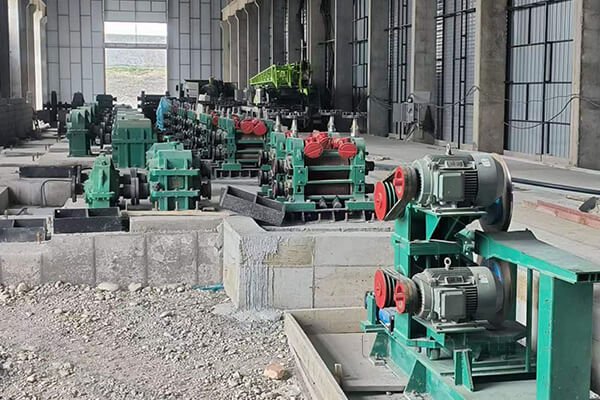Of course,The main equipment of the rolling mill includes working stand, connecting bearing, gear stand, main coupling, reducer and so on.

On the rolling line, the working conditions are poor. Because the equipment is exposed to high temperature, humidity and dust for a long time, it is easy to be corroded.
Extreme pressure
Machine bearings are subject to large rolling forces and impact loads. Poor rolling lubrication will directly cause bearing scratches or even burn accidents.
seal
For dry oil lubrication, most of the grease plays a sealing role, except for a small part of the lubricating role.
water resistant
The bearing seat of the hot and cold rolling mill will be affected by cooling water or other media, such as the intrusion of emulsion, which will cause the working surface of the bearing to corrode,
which is quite harmful to the bearing and is also the main cause of bearing wear.
heat resistant
The hot rolling temperature of steel is generally 800~1250℃, and the temperature of the roll surface in the deformation zone can be as high as 450~550℃, so a large amount of water needs to be used to cool the roll.
shear stabilization
The rolling speed of hot rolling and cold rolling equipment is very high.
- Selection of Lubricants:
Choosing the right lubricant is essential. Factors such as load, speed, temperature, and environmental conditions influence the selection.
Common lubricants for rolling mills include oils, greases, and sometimes specialized compounds designed for high temperatures and heavy loads.
- Circulating Systems:
Rolling mills often employ circulating lubrication systems to deliver lubricants to critical areas efficiently.
These systems include pumps, filters, and distribution networks to ensure proper lubricant flow to bearings, gears, and other moving parts.
Automatic Lubrication Systems:
These systems automatically deliver the right amount of lubricant at predetermined intervals, reducing manual intervention and ensuring consistent lubrication.Centralized Lubrication:
Centralized lubrication systems centralize the lubrication process, making it easier to monitor and maintain.
They distribute lubricants from a central reservoir to various components, ensuring uniform lubrication and reducing the risk of over- or under-lubrication.
Grease Lubrication:
Grease is commonly used in rolling mills for its ability to stay in place and provide long-lasting lubrication.Monitoring and Maintenance:
Regular monitoring of lubrication systems is essential to ensure they are functioning correctly. This includes checking oil/grease levels, inspecting for leaks, and monitoring the condition of lubricants through oil analysis.Cleanliness:
Keeping the lubrication environment clean is vital to prevent contamination, which can accelerate wear and damage components. Proper filtration and sealing of lubrication systems help maintain cleanliness.Training and Education:
Proper training of personnel responsible for lubrication tasks is essential. They should understand the importance of lubrication, proper techniques for application, and the signs of lubrication-related issues such as overheating or inadequate lubrication.Consultation with Lubrication Experts:
In complex rolling mill setups or when encountering specific lubrication challenges, consulting with lubrication experts or manufacturers can provide valuable insights and recommendations for optimal lubrication practices.
This is the knowledge about rolling mill lubrication, I hope to help you. Welcome to Luoyang Judian, you can consult us about anything about rolling steel production.